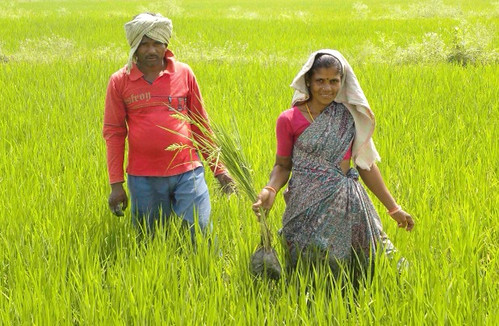The agreement: Four hectares of land, the size of four soccer fieldss, for a mere 10 kg of sorghum.
“My father-in-law pawned the land for food,” said Kowasalya Thati, lifting the hem of her grey sari and stepping into the muddy field of rice paddy in Kottasuraream village in the southern region of Andhra Pradesh.
“When he returned the grain later, the land owners refused to give it back. They claimed it and we had no document to prove otherwise. For 28 years, we had to work on the land we once owned. Without land, we had nothing ... not even enough food. It’s a miracle we got it back.”
Kowasalya’s family is one of hundreds of thousands who belong to India’s 700 listed tribes who are at last gaining legal titles to the land they have lived on for generations, thanks to a legal aid scheme run by the Andhra Pradesh government with international advocacy group Landesa.
In the scheme, which is likely to be rolled out nationally, young people often armed with only a secondary-level education are drawn from mud-and-brick villages and trained as paralegals, then sent out to help people to understand their rights and secure title, or “patta”, to their land.
For most tribal and landless families, that simple piece of paper means an end to a constant fear of hunger.
“Land is the most important factor of production,” said Pramod Joshi, South Asia director of the International Food Policy Research Institute. “It helps ensure food security for the poorest of the poor. It has been shown in many regions that if the poor have land, they are in a better position to feed themselves.” More
